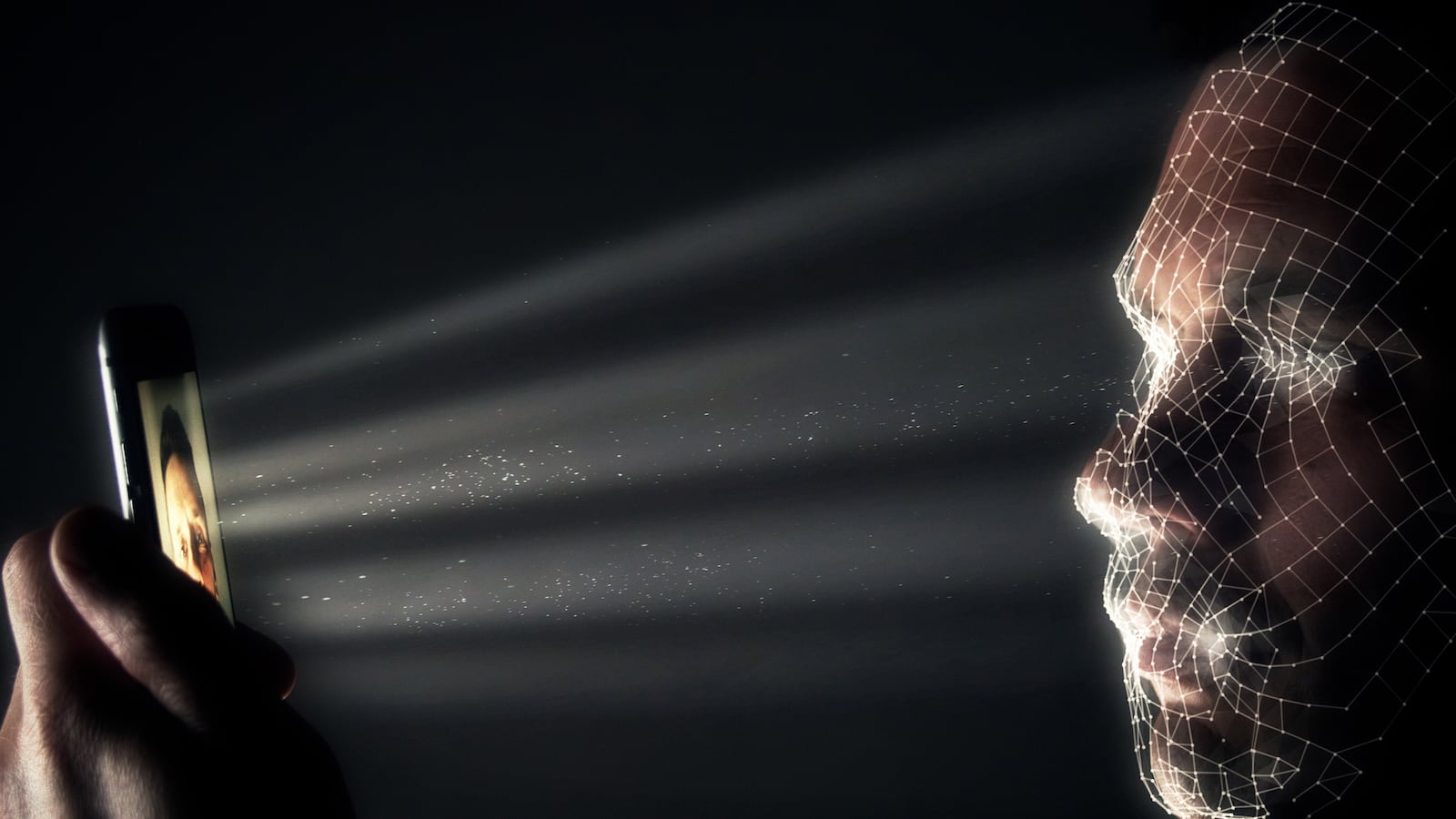Officials from U.S. Immigration and Customs Enforcement met with Amazon this summer and the corporate giant pitched the government agency on its controversial technology that can identify people in real time by scanning faces in a video feed, documents obtained by the Project on Government Oversight show.
Arming ICE with real-time facial recognition surveillance technology could supercharge the agency’s enforcement power, and make undocumented immigrants afraid to seek out vital services in places where cameras could be located. During this administration, ICE agents have targeted immigrants trying to enter and leave medical facilities and houses of worship despite an official policy that discourages apprehensions at “sensitive locations.” With facial recognition surveillance technology, ICE could automate and surreptitiously surveil these and other public locations permanently by setting up video cameras and linking them to Amazon’s software.
What’s more, numerous studies, including research by the U.S. Government Accountability Office and the MIT Media Lab, have shown that facial recognition technology is more likely to mistakenly identify people of color as targets—which can lead to wrongful arrests.
Former ICE officials expressed concern to POGO about the potential for abuse of this technology, especially given the current political climate.
“If they have this technology, I can see it being used in any way they think will help them increase the numbers of detentions, apprehensions, and removals,” said Alonzo Peña, who served as deputy director of ICE and was previously special agent-in-charge of its field offices in San Antonio, Phoenix and Houston. Possible abuse “should be an area of concern, given this new technology—there’s potential for its use to be very widespread.”
According to the documents obtained by POGO through a Freedom of Information Act request, officials from ICE visited Silicon Valley this June to meet with Amazon Web Services at the Redwood City, California office of McKinsey & Company, a consulting firm that had a management contract with ICE that ended this summer.
McKinsey’s role in connecting ICE to companies with cutting edge facial recognition products and other technology is also previously unreported. McKinsey declined to comment for this story.
In an email to ICE’s Homeland Security Investigations (HSI) office dated June 15, 2018, an Amazon “sales principal” described the meeting and spelled out follow-up “action items.” One was setting up a tech briefing for ICE officials about tools including the tagging and analysis capabilities of Amazon’s real-time facial matching system, dubbed “Rekognition.”
“Thanks again for your interest in AWS [Amazon Web Service] to support ICE and the HSI mission,” the Amazon salesperson wrote.
The email lists “actions items from our conversation,” starting with an “Innovation Workshop focused on a big HSI problem,” but does not describe the problem. Regarding that problem, the Amazon employee wrote, “I would be happy to arrange for a 1 day workshop. If there’s interest in further exploration, we can schedule a meeting to review the process in more depth and help assess your target list of ‘Challenges’.” The list includes “Rekognition Video tagging/analysis, scalability, custom object libraries.”
ICE would not detail how many times it has met with Amazon to discuss Rekognition. “We can’t provide data on how often we’ve met with a particular vendor to discuss emerging technology they’re developing, but industry outreach and building relationships with potential contractors is fairly standard within government acquisition,” an ICE spokesperson told the Project on Government Oversight (POGO) in an email.
Amazon did not respond to requests for comment for this story. (UPDATE, 10/23/18, 10:40 p.m. ET: In a statement shared after this story was published, Amazon Web Services confirmed it discussed Rekognition with ICE. “We participated with a number of other technology companies in technology ‘boot camps’ sponsored by McKinsey Company, where a number of technologies were discussed, including Rekognition,” a company spokesperson said in an emailed statement. “As we usually do, we followed up with customers who were interested in learning more about how to use our services [Immigration and Customs Enforcement was one of those organizations where there was follow-up discussion].”)
Facial recognition technology can scan a face and run it against tens of millions of faces in a database to find a match in a single second. Real-time facial recognition technologies, like Rekognition, can scan a crowd using live video feeds.
Peña, the former ICE official, said there’s a real risk that the technology could end up being deployed at sensitive locations in ways that could scare undocumented immigrants away from important services.
While there is an official policy ICE insists is still in effect that requires special circumstances for immigration enforcement actions at schools, medical facilities and places of worship, legal experts say the policy leaves much to the agency’s discretion. And this year there have been a number of high profile immigration enforcement actions at such places. Enforcement agents have also arrested people, including those alleging domestic violence, at courthouses—the policy does not deem “sensitive.”
“In the past, certain areas like schools, churches, and courts were off-limits—there were policies in place that would prevent agents from going into those areas, but under this administration a lot of those policies are no longer enforced,” Peña said.
Rekognition faced scrutiny earlier this year after the ACLU revealed it was already being used by some local police departments. And using Amazon’s software, the ACLU discovered this July that inputting photos of every member of Congress into a mugshot database misidentified 28 individuals as other people who had been arrested for a crime, with a disproportionate error rate for people of color.
Amazon responded with a blog post critiquing the confidence threshold used in the ACLU study, saying that it recommends higher thresholds that will reduce false positives.
The ACLU countered that Amazon moved the goalpost since it only increased the recommended confidence interval after the ACLU study was published.
Amazon also argued in its blog post that law enforcement doesn’t rely on Rekognition alone and it is only “the first step in identifying an individual.”
Amazon has stressed that it requires “customers to comply with the law and to be responsible when using Amazon Rekognition” and advises law enforcement not to use Rekognition “to make autonomous decisions for scenarios that require analysis by a human,” such as “determining who committed a crime.” However, it currently has no public terms of service requirements to stop police from using Rekognition in that manner. Few details have emerged from what a handful of local police departments are doing with Rekognition.
Peña, the former ICE official, said that the risk of misidentification posed by tools like Rekognition would require significant safeguards to prevent abuse, but he does not believe that the risk would be taken seriously by the current administration.
“If they say this technology could help identify people, but there are going to be misidentifications, they’re probably going to implement it and deal with that later,“ he added.
Sarah Saldaña, who led ICE during the final years of the Obama Administration, said the technology doesn’t sound ready for deployment. “I don’t see this technology being used on a wide-scale basis as long as it’s this problematic. I think it makes a lot of sense for people to test, look at, and review this skeptically,” she said. “I would be surprised if ICE would start using it without it doing better than the results it’s showing now.”
For now, ICE says it does not have any public contracts with Amazon for Rekognition. “Publicly available procurement data indicates that U.S. Immigration and Customs Enforcement does not have a contract with the vendor you’ve identified below for the services referenced, so it would be inappropriate to comment on this specific piece of technology,” an ICE spokesperson emailed.
Saldaña, the former ICE chief, told POGO she didn’t have “direct knowledge” of ICE’s use of facial recognition during her tenure, but wouldn’t have been surprised if there was “very rudimentary use of” some forms of the technology while she led the agency. However, “it certainly wasn’t to the level of vendor conversations” that she knew about, Saldaña said. But the Trump administration appears keen to explore high-tech surveillance tools.
A July 27 letter led by Senator Ron Wyden (D-Oregon) asked ICE and other federal enforcement agencies about current use of facial recognition and any plans for future development. In a response to Senator Wyden’s office dated October 16, ICE only discussed its limited use of existing Customs and Border Patrol and State Department facial recognition databases and a system used by a contractor as part of an alternatives to detention program. The agency did not disclose its conversations with Amazon regarding Rekognition.
In its communication with POGO the agency does not rule out that it might contract with Amazon or other companies for similar technology. The spokesperson emailed that ICE “will continue to explore cutting-edge technology to compliment criminal investigations going forward.”
And Amazon has worked to continue a dialogue with ICE in the midst of critical media coverage. Amazon shared its public response to the ACLU’s research with ICE, according to the records obtained by POGO. On July 31, an Amazon representative emailed an unnamed ICE employee a link to a company blog post, noting that the criticisms of the ACLU study “may be of interest given your ongoing effort.”
That message shows Amazon was courting ICE’s business despite protests from its own employees. Over a month earlier, Gizmodo reported some Amazon employees signed a letter calling for the company to stop selling Rekognition to law enforcement and to cut ties with companies that used Amazon’s cloud computing infrastructure to “enable ICE.” More than 450 anonymous Amazon employees have now reportedly signed the letter.
In an anonymous op-ed published on Medium last week, an Amazon employee warned that known problems with how the technology struggles to accurately identify people with darker skin “will only reproduce and amplify existing systems of oppression.”
Even as Amazon founder and chief executive Jeff Bezos defended his company’s dogged pursuit of government defense and intelligence contracts last Monday, he tried to distance himself from current immigration enforcement efforts.
“I’d let them in if it was me, I like ‘em, I want all of them in,” Bezos said during an interview with Wired, referring to migrants. But just this past summer, Amazon was quietly trying to get ICE’s business, with an employee writing the agency that the company was “ready and willing” to support its mission.
“It is disturbing that Amazon continues to actively ignore warnings from members of Congress, civil rights groups, the public, and its own shareholders and employees about the dangers of its technology,” said Jacob Snow, technology and civil liberties attorney for the ACLU of Northern California.
Amazon’s facial recognition in-roads with ICE remain unclear, in part because the agency did not fully respond to POGO’s Freedom of Information Act request. While the records produced show Amazon’s correspondence with ICE, ICE did not provide records from ICE employees to Amazon, despite the apparent two-way communications between the organizations. And the agency did not search for records at the Enforcement and Removal Operations office, the part of the agency that directly deals with deportations. ICE declined POGO’s request to conduct a search without providing a reason for its refusal.
The emails obtained by POGO involve HSI, an ICE office with more than 6,000 special agents and a wide-ranging mandate to investigate crimes involving “America's travel, trade, financial and immigration systems.” HSI has previously touted its use of facial recognition as an investigative tool in child exploitation cases.
Tools or information used by one part of ICE are often made available across the agency.
In an email to POGO, an ICE spokesperson wrote, “ICE Enforcement and Removal Operations may have access to resources acquired by HSI. ICE components may use various investigative techniques and technological tools to accomplish its mission to protect the United States from cross-border crimes and illegal immigration that threaten national security and public safety.”
And HSI is not the only part of ICE and the Department of Homeland Security with an interest in using facial recognition and automated identification technology, including for immigration enforcement.
The Department is currently replacing its massive biometric data system and Congress has directed it to include “advanced facial recognition, in its ongoing enhancements.” The replacement, called the Homeland Advanced Recognition System, supports the enforcement and administration of “our immigration laws,” and other missions, according to government documents.
This article was reported by the non-profit Project on Government Oversight. Disclosure: Andrea Peterson is a former reporter with The Washington Post, which is owned by Amazon CEO Jeff Bezos. Jake Laperruque has advocated for government reforms related to facial recognition technology.








